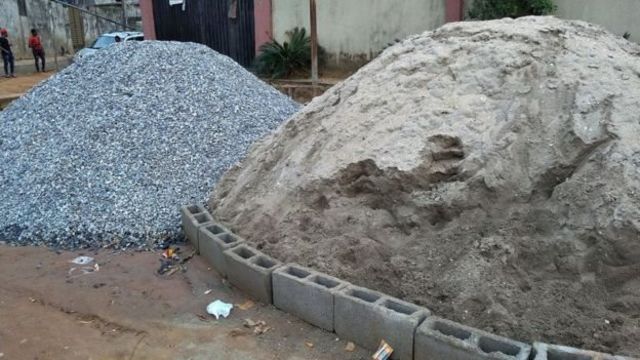In this post, I am going to give you accurate building sand prices in South Africa and other information worth knowing if you are thinking of partaking in a building project.
Let’s first start by looking at what building sand is, where it comes from and the amount of sand required to embark on certain projects.
What Is A Building Sand?
Sand is the most widely used aggregate and, after air and water, our most utilized natural resource. In reality, each year we utilize 50 billion tons of sand for construction.
There are numerous sorts of sand, each distinguished by the size of its grains and the manner in which it has been cleaned.
Because of its finer grade and small, even particles, Building Sand (also known as Plasterer’s, Mason’s, or Bricklayer’s sand) is immediately distinguished.
It’s commonly blended with water and cement to form mortar, and it’s easy to work with and apply. As a result, builders’ sand is ideal for bricklaying and plastering jobs.
Where Do We Get Building Sand From?
The sand that we utilize is referred to as ‘marine sand.’ It’s the sand found at the bottom of riverbeds, on our beaches, and on the bottoms of lakes and oceans.
Over the course of 25 thousand years, builders’ sand has been meticulously crafted from minute particles of decomposed rock (silica quartz), coral, minerals, and shells.
Naturally, the exact composition will vary based on the local rock sources and conditions at the time the pebbles were formed.
To the end-user, however, the outcome is soft, angular sand that fits together flawlessly like puzzle pieces. So, the next time you go to the beach, think about the journey the sand beneath your feet has taken.
How Much Sand Do You Need To Build (eg. 1000 bricks)
There are a variety of mathematical methods you may use to figure out how much building sand you’ll need for your project, but on average, 1000 bricks will take 0.6 cubic metres of sand (1 tonne) plus 6–8 bags of cement (depending on the mix strength required).
Although the results will only be as good as the dimensions supplied, it is always advisable to utilize a sand calculator (several of which can be found online).
Difference Between Plastering Sand And Building Sand
To manufacture plastering sand, all of the particles are cleaned and washed to remove any salt, silt, or clay content.
Most people prefer plastering sand to builders’ sand for rendering because it shrinks and cracks less after drying.
To manufacture plastering sand, all of the particles are cleaned and washed to remove any salt, silt, or clay content.
Most people prefer plastering sand to builders’ sand for rendering because it shrinks and cracks less after drying.
Building Sand Prices In South Africa
Below is the price list of Building sand in South Africa brought to you courtesy of pavementmaterial.co.za.
- 6 Cubic Filling Sand – R 3,000.00 to R 3,500.00.
- 6 Cubic Washed River Sand – R 3,900.00 to R 5,000.00.
- 6 Cubic Meter Building Sand – R 2,900.00 – R 3,500.00.
- 5 Ton Washed Play Pen Silica Sand R 7,000.00 to R 7,500.00.
- 24 Cubic Washed River Sand – R 10,000.00 to R 15,000.00.
Watch the video below:
